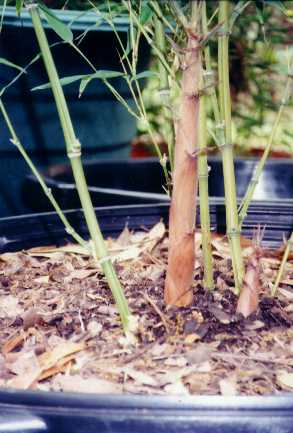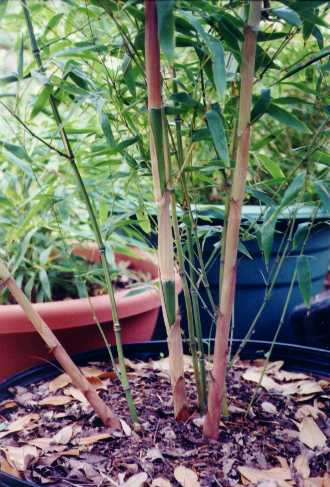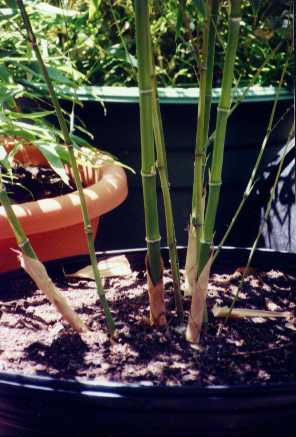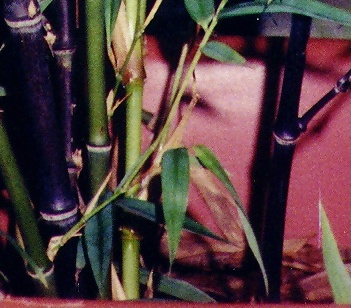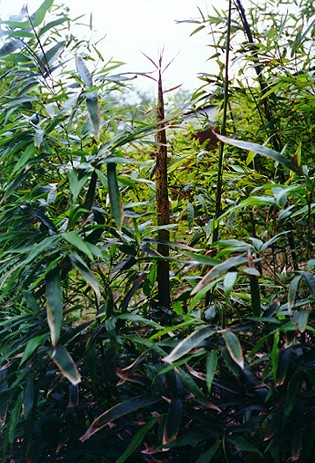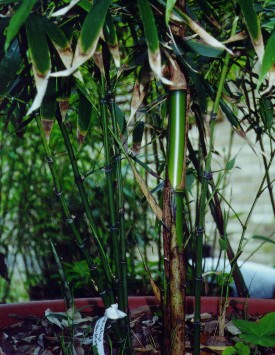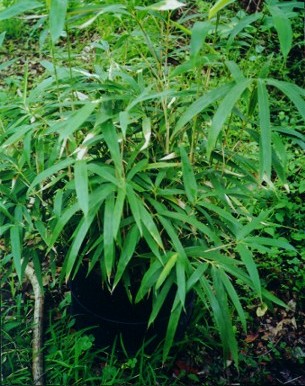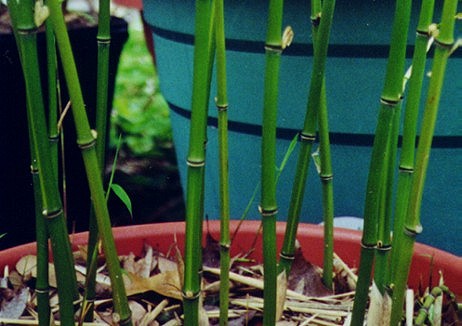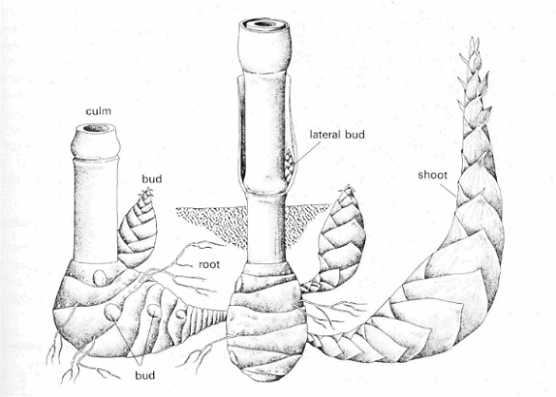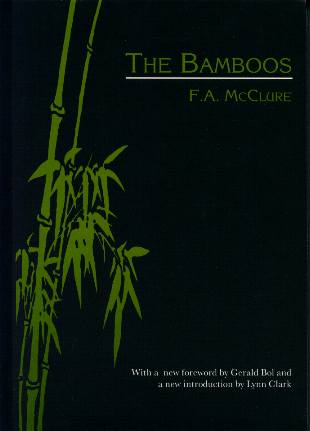Bamboo,
is a wonderful plant. Besides being the
most utilized plant in the orient, and possibly the world, it's beautiful in it's own right.
In south east Asia, where the largest numbers of Bamboo thrive, it is used to make household
utensils, plumbing, buildings, weapons, musical instruments, fishing poles, tool handles, paper,
writing pens, pots, scaffolding for some of the tallest buildings, and of course food, and much
much more. In a few years a grove of timber bamboo, can compete with native hardwoods and conifers,
and take one year instead of 30 to replace itself! (*) It grows faster than any other plant on the
planet. Bamboo was the closest living plant to the Hiroshima bomb, and one of the first to return.
It is indigenous to every continent except Europe, and the poles. There are some 12 to 15 hundred
species. Bamboo was here before man 100 - 200 million years.
But for all it's history, many people in America know very little about Bamboo. Other than the
few cane species that have been here a long time, the majority of bamboo entered the US around
the turn of the century. Some of the early attempts at large scale production & harvesting, that
mostly failed, brought many species of bamboo into the US for the first time. Over several years
of importation in the former half of the century, Americans had their first look at this diverse
& beneficial plant, but today, most Americans still don't know much about it.
The majority of people I talk to are either uninformed or misinformed
about Bamboo. Usually if the person knows anything, it's the horror stories of
how it gets away and takes over everything in your yard, racing beyond your
property to eventually engulf the world. Well most of the stories seem that
extravagant. I have been warned numerous times that I was playing with evil
incarnate, and even hear the stories from legitimate nurseries, (who almost
never carry any). And their almost always from hearsay. Someone knew someone
et cetera. Yes, there are some bamboo's that if given the climate and time, would
gladly claim the lions share of your yard. Simple. Don't plant those kinds
in the ground. If you want them, and don't have the room for their imminent
expansion, put them in large pots. The "runners" as they are called, are a
minority among the bamboo. Out of the 12 to 15 hundred species known, less
than ten percent are runners. The vast majority of Bamboo are slow growing
"clumpers". However, the temperate runners are some of the hardiest, and most
beautiful plants of the family. Below the color photo's, are two (**) black
and white pictures showing the difference between these two. Some Bamboo fall
in between these two categories.
The two sets of black bamboo bamboo pictures below the first three are both
Phylostachys Nigra. Hardy temperate runners that fare well in either hot or cool
climates. The first pictures are P. Nigra Henon, variety. Probably
the parent plant, and it grows much larger than the latter, (although all of these
pictures are of very young plants). The Black culms in the lower pictures are just
called P. Nigra, & were most likely discovered first. And although it's now
assumed to be a hybrid of P. Nigra Henon, the name remains. The black variety comes
up green, and will normally go black within 6 months to a year. Some are more of a
mixed brown black that's either blotchy or only partial black, and some are purplish.
Mine are mostly black with some culms being extremely so. In the lower photo they
appear purplish because of the early morning light.
